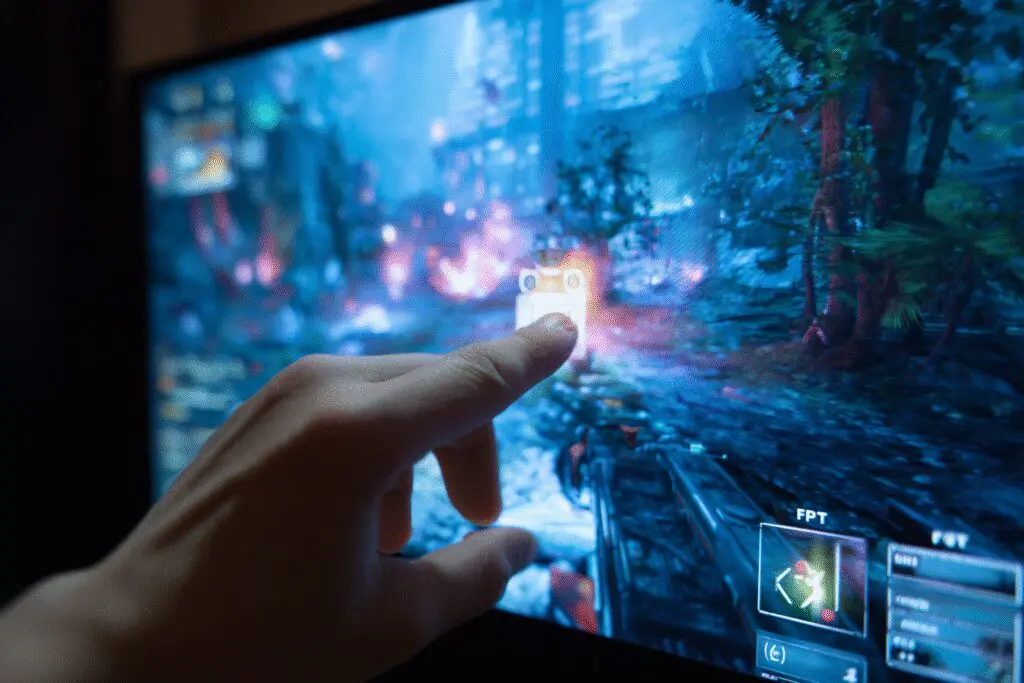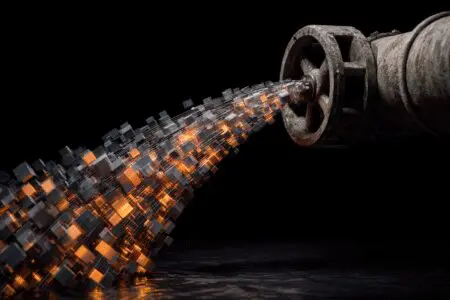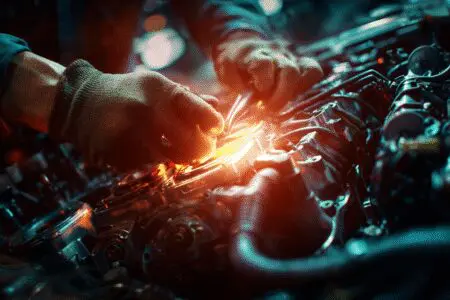Did you know that in many of the latest blockbuster games, dialing the graphics settings from “Ultra” to “High” can boost your performance by over 40%, yet the visual difference is something you’d barely notice in motion? It’s a staggering trade-off that most players never explore. If you’ve ever felt the sting of stuttering gameplay during a critical moment, you understand that smooth frames are king. This guide will show you exactly how to improve FPS on PC, not by telling you to buy a new graphics card, but by demystifying the long list of settings inside your favorite games.
We are going to dive deep into what each graphical setting actually does. More importantly, we’ll uncover which ones are performance hogs and which ones offer “free” visual upgrades. Think of this as your personal tuning session to find that perfect sweet spot between stunning visuals and buttery-smooth performance for your unique hardware.
More in Gaming Performance & Optimization Category
How to Optimize Windows 10 for Gaming
How to Improve Your Gaming Experience
How to Improve PC Performance for Gaming
What Should You Do Before Changing Any In-Game Settings?
Before you even launch a game, there are a few foundational steps you absolutely must take. Skipping these is like trying to tune a car engine without first checking if it has oil. These actions ensure your hardware is ready to perform at its peak.
Have You Updated Your Graphics Drivers Recently?
This is the number one, most important first step. I can’t count the number of times a friend has complained about a new game running poorly, only for me to ask, “Did you update your drivers?” The answer is often no.
Graphics card manufacturers like NVIDIA, AMD, and Intel are constantly releasing new driver updates. These aren’t just for minor bug fixes; they often contain crucial performance optimizations specifically for new and popular games. A “Game Ready” driver can mean a 5-15% performance uplift overnight. It’s free performance you’re leaving on the table.
- For NVIDIA GeForce Cards: Use the GeForce Experience application or visit the NVIDIA website.
- For AMD Radeon Cards: Use the AMD Software: Adrenalin Edition application or visit the AMD website.
- For Intel Arc Cards: Use the Intel Arc Control application or visit the Intel support website.
Make it a habit to check for a new driver whenever you install a new game.
Is Your PC Getting Too Hot?
Heat is the enemy of performance. When your components, especially your CPU and GPU, get too hot, they automatically slow themselves down to prevent damage. This is called thermal throttling, and it will absolutely crush your FPS.
I learned this the hard way a few years back. I was in the middle of a heated raid in an MMO when my entire PC just shut off. I was baffled. After opening the case, I found that the fans on my graphics card were caked in a thick layer of dust and pet hair, completely choking them. After a thorough cleaning with a can of compressed air, my temperatures dropped 20 degrees Celsius, and my performance became stable again.
Don’t let this happen to you. At least every few months, open up your PC case and gently clean out any dust buildup on your fans and heatsinks. Ensure your case has good airflow and that the fans are all spinning correctly. You can use free software like HWMonitor to check your temperatures while gaming. If your GPU is consistently hitting over 85-90°C, you likely have a cooling problem.
Which Graphics Settings Have the Biggest Impact on FPS?
Alright, with the basic maintenance out of the way, it’s time to launch your game and head to the graphics menu. The sheer number of options can be overwhelming, but a few key settings are responsible for the vast majority of your performance. Let’s tackle the heavy hitters first.
Can Lowering Resolution Dramatically Improve FPS?
Yes, absolutely. Resolution is, without a doubt, the single most demanding graphics setting. It determines the number of pixels your graphics card has to render in every single frame.
- 1080p (1920×1080): ~2.1 million pixels
- 1440p (2560×1440): ~3.7 million pixels (78% more than 1080p)
- 4K (3840×2160): ~8.3 million pixels (Almost 4 times more than 1080p!)
Every time you jump up a tier in resolution, you are asking your GPU to do a monumental amount of extra work. If you have a 4K monitor but your graphics card is struggling, dropping the in-game resolution to 1440p will provide a massive FPS boost.
However, running a game at a resolution lower than your monitor’s native resolution can make the image look blurry. This is where modern upscaling technologies come in. Technologies like NVIDIA’s DLSS, AMD’s FSR, and Intel’s XeSS render the game at a lower internal resolution and then use AI to intelligently upscale the image to fit your screen. The results can be magical, often providing a huge performance boost with minimal, and sometimes even improved, image quality. If a game supports one of these, it should be the first setting you experiment with.
What is Anti-Aliasing and Should I Turn It Off?
Have you ever noticed the jagged, staircase-like edges on objects in a game? Gamers call these “jaggies,” and Anti-Aliasing (AA) is the setting designed to smooth them out. It makes the image look softer and more realistic, but it comes at a performance cost.
There are several types of AA you’ll commonly see:
- FXAA (Fast Approximate Anti-Aliasing): This is a lightweight option that blurs the entire image slightly to hide jaggies. It has a very small performance impact but can soften the picture a bit too much for some people’s tastes.
- MSAA (Multisample Anti-Aliasing): This is an older, more demanding technique. It provides a sharp image but comes with a significant performance hit. It’s generally not recommended unless you have a lot of performance headroom.
- TAA (Temporal Anti-Aliasing): This is the modern standard used in most games. It’s very effective at smoothing edges, especially in motion, but can sometimes introduce a bit of “ghosting” or blur. It has a moderate performance impact.
For a big FPS gain, try dropping your AA setting one level, or even turning it off completely. If you’re playing on a high-resolution screen (1440p or 4K), jaggies are much less noticeable, and you can often get away with no AA at all.
How Much Do Shadow Quality Settings Affect Performance?
Shadows are crucial for making a game world feel grounded and realistic. Unfortunately, they are also one of the biggest performance killers after resolution. Calculating how light interacts with every object in a scene to cast dynamic, soft-edged shadows in real-time is an incredibly complex task for your GPU.
Most games offer several tiers for shadows, like Low, Medium, High, and Ultra. The difference between High and Ultra is often very subtle—perhaps slightly softer shadow edges that you would never notice during frantic gameplay. However, the performance difference can be huge.
Dropping your shadow quality from Ultra to High is one of my go-to moves for an instant 10-15% FPS boost. Going down to Medium can grant you even more. Honestly, unless you’re specifically stopping to take cinematic screenshots, you will not miss Ultra shadows.
What Other Settings Can Give Me a Good FPS Boost?
Once you’ve tuned the “big three” (Resolution, Anti-Aliasing, and Shadows), you can move on to the secondary settings. These might not provide the same gigantic leaps in performance, but a few tweaks here and there can really add up to a much smoother experience.
Is Ambient Occlusion Worth the Performance Cost?
Ambient Occlusion (AO) is a subtle but beautiful effect. It adds small, soft contact shadows where objects meet or where light is blocked. Think about the corners of a room or the area where a cup rests on a table. AO makes these areas slightly darker, adding a sense of depth and realism to the scene.
Common types include SSAO, HBAO, and VXAO. While it does make the game look better, it carries a moderate performance cost. My honest opinion? It’s a “nice-to-have,” not a “must-have.” When you’re fighting for every last frame, this is one of the first “eye candy” settings I recommend turning off. The game will look slightly flatter, but you might gain a solid 5-10% in performance that you can put to better use elsewhere.
What About Post-Processing Effects like Motion Blur and Bloom?
Post-processing effects are graphical filters applied to the image after it has been rendered, like putting a filter on a photo. Their performance impact varies, but they are often a matter of personal taste.
- Motion Blur: This effect blurs the screen during fast camera movements to simulate how our eyes perceive motion. I turn this off in every single game, without exception. I personally find it disorienting and feel it hides detail. The fact that disabling it can save you a few frames is just a welcome bonus. Many competitive players disable it to maintain a clear picture at all times.
- Bloom: This makes bright light sources appear to glow, like a bright light in a misty room. The performance impact is usually very small, but some players prefer a cleaner, less “glowy” image and turn it off.
- Depth of Field (DoF): This effect blurs objects in the background, simulating a camera focusing on a specific subject. It’s great for cutscenes and a cinematic feel, but during gameplay, it can be a disadvantage, blurring details you might want to see. Turning it off can provide a small FPS boost and a clearer view of your surroundings.
Should I Lower Volumetric Lighting and Fog?
Have you ever seen those beautiful “god rays” streaming through a forest canopy or a dusty window? That’s volumetric lighting. This effect makes light and fog have a tangible volume and presence in the game world.
It looks incredible, but it can be surprisingly demanding, especially in games with dynamic weather systems or dense environments. The Red Dead Redemption 2 and Cyberpunk 2077 games are famous for their heavy use of this technology. Dropping the volumetric quality from Ultra or High down to Medium is often a great way to gain back a significant chunk of performance without completely sacrificing the effect.
Are There Any “Set and Forget” Settings I Should Know About?
Not every setting is a trade-off. A couple of options in your graphics menu have a negligible impact on performance on any modern hardware, so you can usually crank them up and enjoy the free visual improvement.
Anisotropic Filtering: Does It Affect FPS?
Anisotropic Filtering (AF) affects the sharpness of textures that are viewed at an angle. For instance, imagine looking down a long, textured road. Without AF, the part of the road far away from you would look like a blurry, smudged mess. With AF, it remains sharp and clear.
Here’s the great news: modern graphics cards are so good at this process that the performance difference between having AF turned off and setting it to the max (usually 16x) is almost zero. It’s often less than a single frame per second. This is one setting you should always turn to its maximum value. It’s a free, massive improvement to texture quality.
What is Texture Quality and How Does It Relate to VRAM?
Texture Quality determines the resolution of the surface images (textures) applied to 3D models. Higher-quality textures have more detail and make the world look crisp and sharp, while low-quality textures can look muddy and pixelated.
Interestingly, changing the texture quality setting usually has a very small impact on your actual FPS. Instead, its main requirement is VRAM (Video RAM), which is the dedicated memory on your graphics card. If you set the texture quality too high for the amount of VRAM you have, the game will stutter and hitch as it struggles to load assets.
Here is a simple rule of thumb:
- 4-6 GB of VRAM: Use Medium textures.
- 8 GB of VRAM: High textures should be your sweet spot.
- 12 GB of VRAM or more: Feel free to crank it to Ultra.
Setting this correctly based on your GPU is key to preventing stuttering. It won’t necessarily boost your max FPS, but it will make your framerate much more stable and consistent.
How Do I Find the Perfect Balance for My System?
So, how do you put all of this information together? The truth is there’s no single “best settings” guide that works for everyone. The interaction between your CPU, GPU, and RAM is unique. The best way to optimize is to do it yourself, methodically. This part of the process, understanding the delicate dance between the processor and the graphics card, is a fascinating topic explored in depth by institutions like Purdue University’s College of Engineering.
This is where my own process comes in. I don’t just copy some guide online. I start by dropping all settings to their lowest possible values, except for resolution and texture quality. I set those based on my monitor and VRAM, as we discussed.
Then, I find a demanding but repeatable section in the game. Many games include a built-in benchmark tool, which is perfect for this. If not, I’ll just find a busy area and run the same path for 60 seconds.
With a baseline FPS in mind, I increase one setting at a time, starting with the highest impact ones. I’ll bump shadows to Medium and re-run the test. Then to High, and test again. I keep doing this for each major setting, observing the performance cost. It might take about 30-45 minutes, but the result is an experience perfectly tailored to my specific PC. You learn exactly what your machine is capable of and can make informed decisions rather than guessing.
Final Thoughts: It’s Your Game, Your Experience
At the end of the day, graphics optimization is a personal journey. Some players are willing to sacrifice every bit of eye candy for the highest possible framerate in competitive shooters. Others prefer a cinematic, visually rich experience in single-player stories and are happy with a stable 60 FPS.
There is no right or wrong answer. The goal is to eliminate distracting stutters and achieve a level of performance that feels smooth and responsive to you. Don’t be afraid to experiment. Use this guide as a roadmap, but trust your own eyes and your own feeling for what makes a game enjoyable. Now go out there and reclaim those frames!
Frequently Asked Questions – How to Improve FPS on PC

What role do advanced tools like DLSS and FSR play in boosting FPS?
DLSS (NVIDIA) and FSR (AMD) are upscaling technologies that render the game at a lower resolution and then use AI to upscale to higher resolutions with minimal quality loss. Turning these features on can significantly increase FPS, often by 30-50%, making games run much smoother without sacrificing much visual fidelity.
What are post-processing effects, and should I disable them to improve FPS?
Post-processing effects add visual filters like motion blur, bloom, and depth of field to enhance game visuals. However, they can consume a considerable amount of GPU resources. Disabling or lowering these effects can free up performance and provide a smoother gameplay, especially on lower-end PCs.
How does screen resolution affect game performance?
Screen resolution determines the number of pixels your GPU must draw. Higher resolutions like 4K require rendering more pixels, which can slow down performance. Reducing resolution from 1440p to 1080p is an effective way to nearly double FPS, providing a smoother gaming experience at the cost of visual sharpness.
Which graphics settings have the greatest impact on FPS and how can I optimize them?
Resolution, shadows, and anti-aliasing have the most significant impact on FPS. Lowering resolution reduces the number of pixels your GPU needs to render, shadows can be turned down from ultra to medium for better performance, and turning off or reducing anti-aliasing can significantly boost FPS.
Why is a high FPS essential for a good gaming experience?
High FPS, or Frames Per Second, ensures gameplay appears smooth and controls feel responsive, especially important in fast-paced games like shooters where quick reactions are crucial. A steady high FPS provides a better gaming experience than fluctuating or low FPS, which can cause choppiness and lag.




